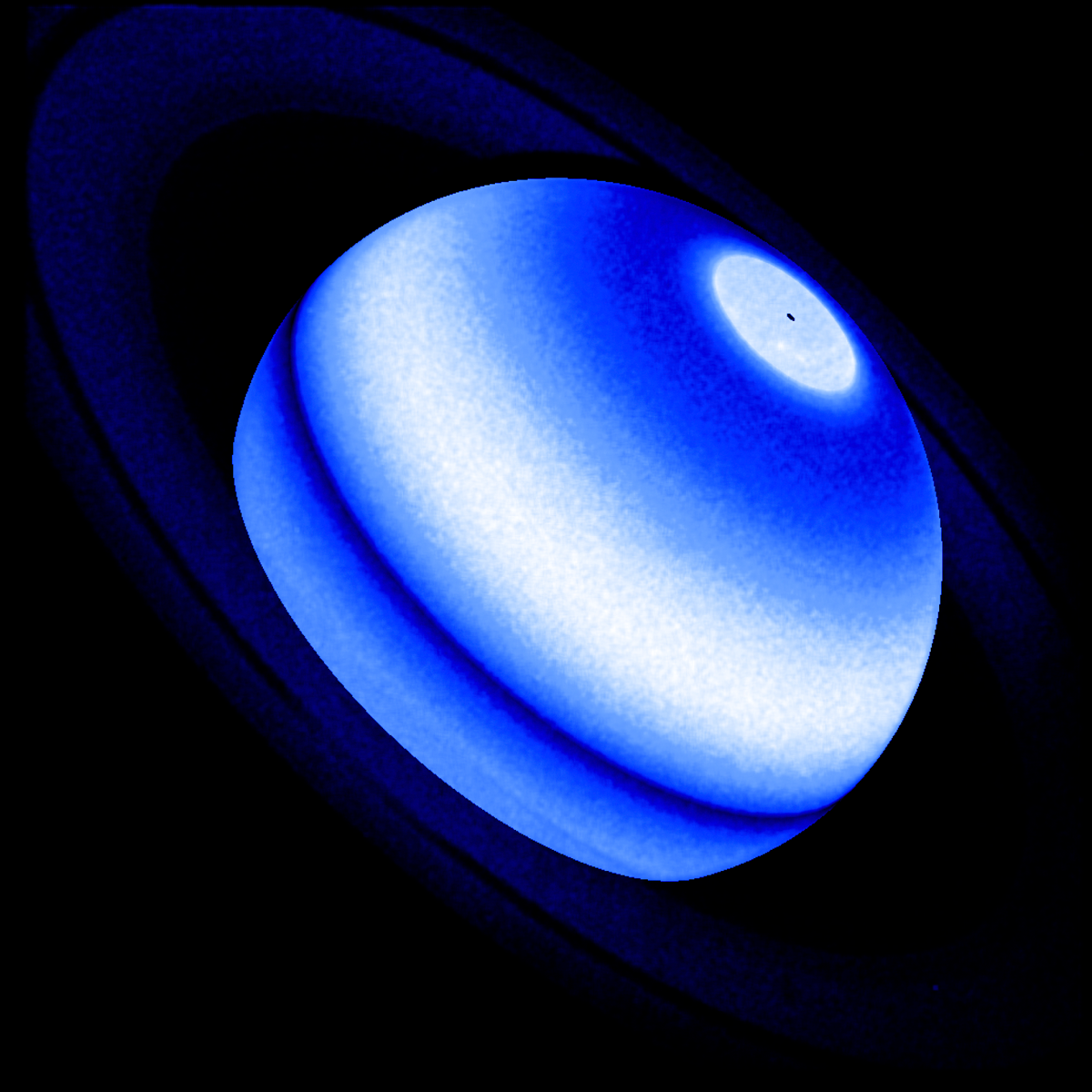
Summary
A Rain of Icy Particles Is Affecting the Giant Planet’s Weather
The planet Saturn is easily recognizable for its opulent ring system that can easily be seen through a small telescope. Astronomers have now found that the rings are not as placid as they look. The icy rings particles are raining down onto Saturn’s atmosphere. This is heating the upper atmosphere. It took a collection of 40 years’ worth of Saturn observations, gleaned from four NASA planetary missions to come to this conclusion. Hubble Space Telescope observations were used to tie together all the evidence, collected in ultraviolet light. These results may be applied to determine if similar ring systems encircle planets orbiting other stars. Their rings would be too far away to be seen, but ultraviolet light spectroscopy of the planets could yield clues.

